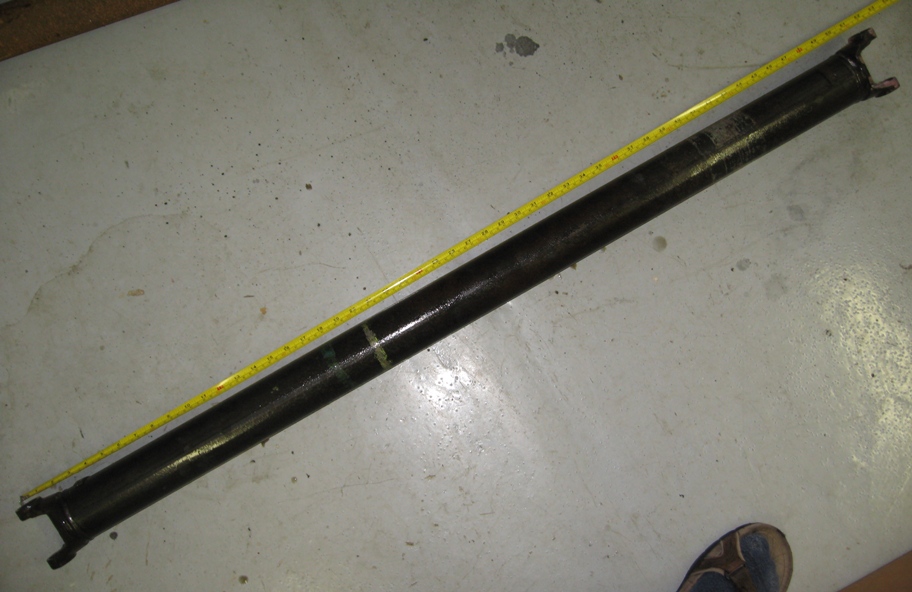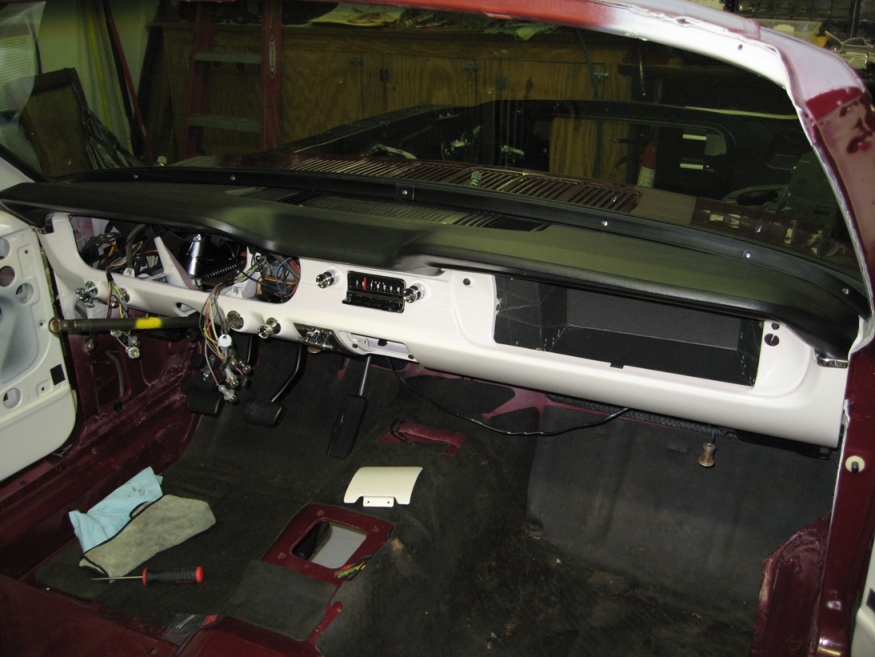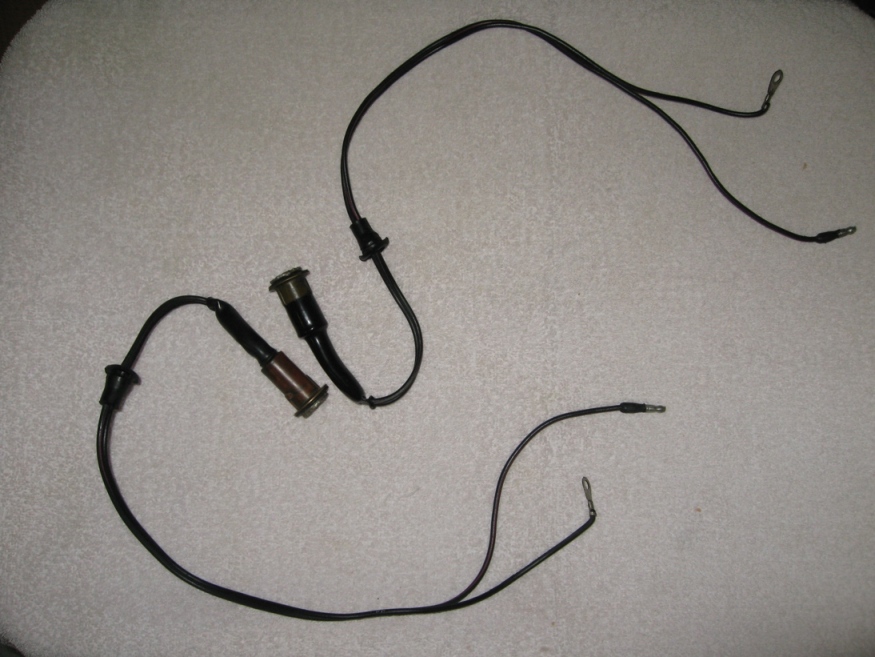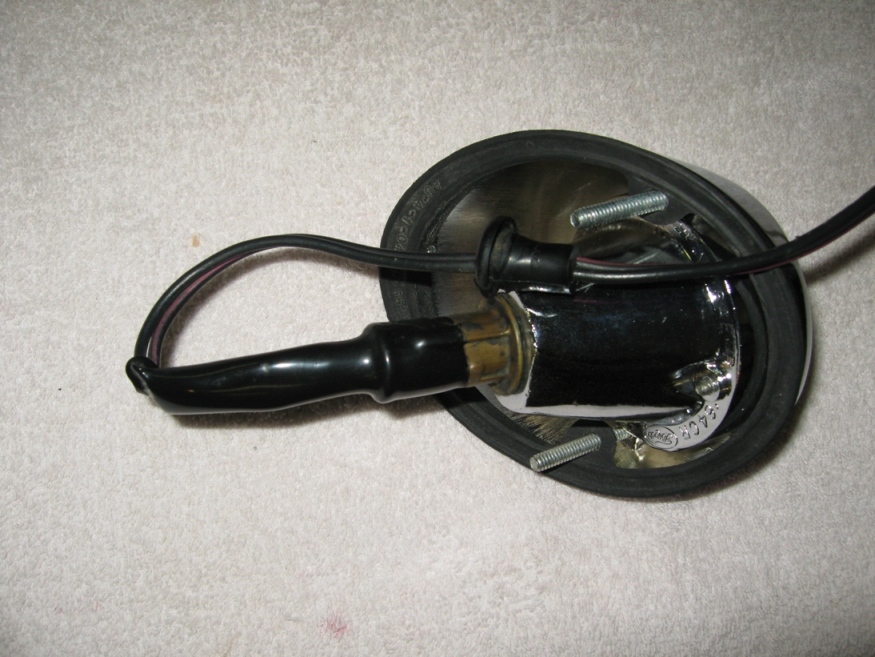Ok, here is a big item a lot of folks will probably like to see... drive shaft stripes for a K code! As with the rest of the drive train, the drive shaft is the original from the K convertible. It's in very nice shape for being 45 years old! First thing I did was clean it with some mineral spirits in my parts washer, using a bristle brush. Hosed it off and was able to see some of the stripe remnants. They were barely legible, so I decided to soak the whole shaft in evaporust. I bought a 6' piece of 6" PVC tube and capped one end. Worked very nice and the stripes "came to life" after 24 hours of soaking. As can be seen, there are 4 stripes. I am including a drawing of the measurements From the back of the shaft going forward, there is a very wide white stripe, then a red one. Then about 20" further down, there is a light green stripe, followed by a green stripe. There are pink paint splotches on the back of the shaft on the yoke end. I didn't find any marks on the front yoke end. On the trans yoke, I found yellow paint splotches all over. It has C3 AA 25 stamped on the end on 3 of the corners around the center. Of course, this is a 28 spline yoke, so not sure what the 25 indicates. On each end of the drive shaft, it was marked 'AJ4683-A' with '2-12' on the opposite side of one end and '1-7A' on the other. I suppose they might be date codes or something, but don't know for sure.
Since all '65 hi-po's used the same drive shaft regardless of body style, I would say these are a good example of what was used at the San Jose assembly plate during '65 production. Of course, we don't know if the codes/colors might have changed during the year. Moreover, without examples, we can't be certain that the same color coding was used at Dearborn and Metuchen assembly plants. It's very likely they were, but just want to point this out. If you have a San Jose K code built around mid-year 1965, then I'd say you probably would be ok using these stripe patterns as a reference. Any other assembly plant would require more references to ascertain if they apply.
I included some 'before' pics to show that the stripes are invisible until cleaned. Click on the pics for the full-size images.



After mineral spirit cleaning:



After soaking (the red stripe dissolved after rinsing):




Here's the drawing. Note in the pictures I measured from the other end.
















































